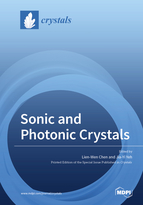Sonic and Photonic Crystals
A special issue of Crystals (ISSN 2073-4352). This special issue belongs to the section "Hybrid and Composite Crystalline Materials".
Deadline for manuscript submissions: closed (31 December 2019) | Viewed by 88919
Special Issue Editors
Interests: sonic and photonic crystal; meta-material; smart material structures; mechanical vibrations
Special Issue Information
Dear Colleagues,
Photonic crystals have a periodic dielectric modulation with a spatial scale on the order of the optical wavelength. Design and optimization of the photonic crystals can be utilized in many applications by combining factors related to the combinations of intermixing materials, lattice symmetry, lattice constant, filling factor, shape of the scattering object, and thickness of a structural layer. In addition, sonic/phononic crystals named acous-tic/sonic band gap media are the elastic analogues of photonic crystals and have also received renewed attention recently in many acoustic applications.
The Special Issue on “Sonic and Photonic Crystals” is focused on broad applications of the results involving characterizations of the sonic and photonic crystal properties. Scientists working in a wide range of sonic/ photonic crystal applications are invited to contribute to this cause.
The topics summarized under the keywords cover broadly examples of the greater number of sub-topics in mind. The volume is especially open for any innovative applications and contributions involving sonic and photonic crystal design aspects of the topics and/or sub-topics.
Prof. Dr. Lien-Wen Chen
Prof. Dr. Jia-Yi Yeh
Guest Editors
Manuscript Submission Information
Manuscripts should be submitted online at www.mdpi.com by registering and logging in to this website. Once you are registered, click here to go to the submission form. Manuscripts can be submitted until the deadline. All submissions that pass pre-check are peer-reviewed. Accepted papers will be published continuously in the journal (as soon as accepted) and will be listed together on the special issue website. Research articles, review articles as well as short communications are invited. For planned papers, a title and short abstract (about 100 words) can be sent to the Editorial Office for announcement on this website.
Submitted manuscripts should not have been published previously, nor be under consideration for publication elsewhere (except conference proceedings papers). All manuscripts are thoroughly refereed through a single-blind peer-review process. A guide for authors and other relevant information for submission of manuscripts is available on the Instructions for Authors page. Crystals is an international peer-reviewed open access monthly journal published by MDPI.
Please visit the Instructions for Authors page before submitting a manuscript. The Article Processing Charge (APC) for publication in this open access journal is 2600 CHF (Swiss Francs). Submitted papers should be well formatted and use good English. Authors may use MDPI's English editing service prior to publication or during author revisions.
Keywords
- Photonic Crystals
- Sonic Crystals
- Meta-material
- Crystals Structure







